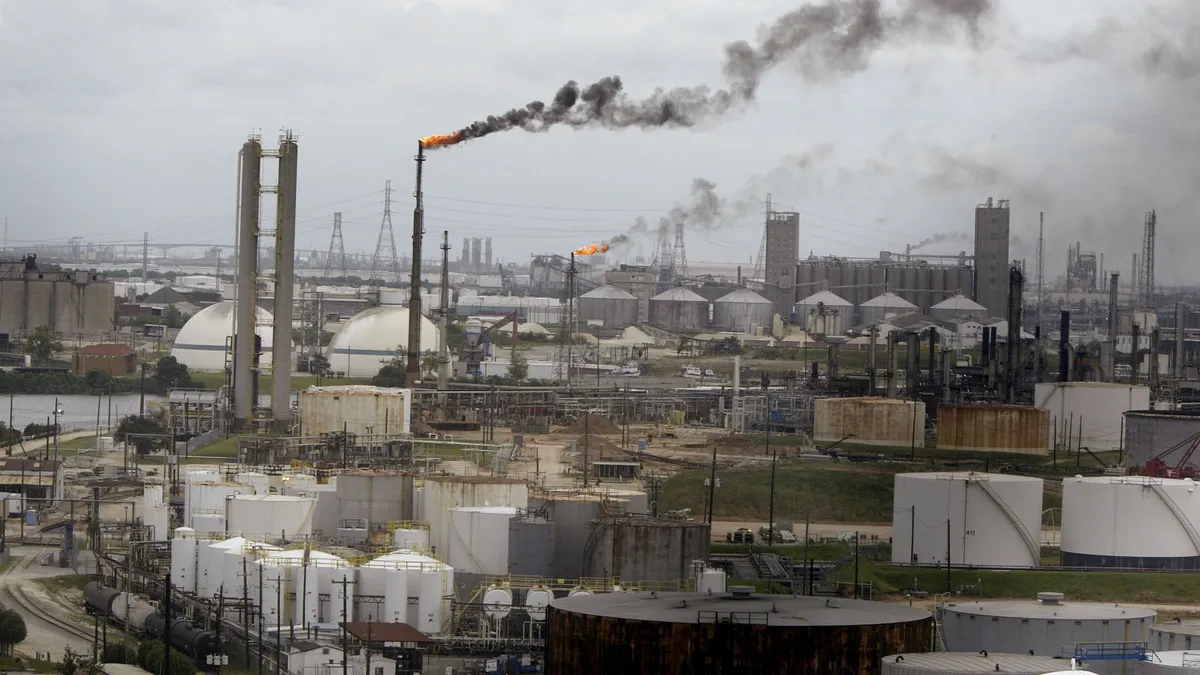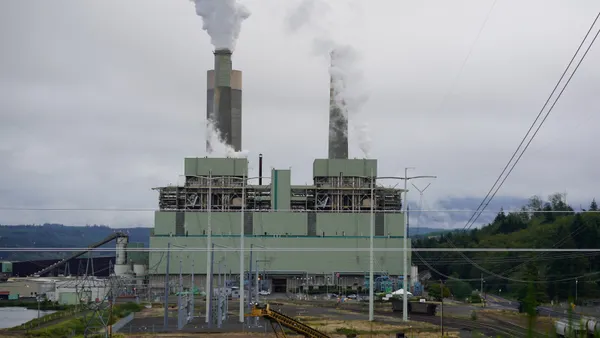Dive Brief:
- Decarbonizing the U.S. power grid is a “critical” factor in efforts to reduce emissions from the industrial sector, the Department of Energy said in a report published Monday. A clean electricity sector accounts for 15% of the industrial emissions abatement potential in 2030, the agency said.
- DOE’s “Pathways to Commercial Liftoff” report examines decarbonization approaches for eight domestic industrial sectors: chemicals, refining, iron and steel, food and beverage processing, pulp and paper, cement, aluminum, and glass. Those sectors accounted for about 14% of U.S. carbon dioxide emissions in 2021, according to the analysis.
- Progress on eliminating emissions from the U.S. industrial sector “is at risk of lagging other countries and domestic net-zero targets,” the agency warned.
Dive Insight:
Challenges to industrial decarbonization include long payback periods for high-temperature electrification technologies and a lack of enabling infrastructure such as hydrogen and carbon dioxide pipelines, according to DOE’s assessment.
The report is the latest in a series that DOE says is aimed at establishing a dialogue with the private sector around critical clean energy technologies. An earlier report on virtual power plants concluded tripling their capacity could save about $10 billion a year in grid costs.
The eight industrial sectors examined in DOE’s new report could require up to $1.1 trillion in capital expenditures to deploy decarbonization technologies to reach net zero in 2050, “with most project development and financing falling on the private sector,” the agency said.
"This administration is committed to engaging with our private sector partners to accelerate the commercialization and deployment of key technologies,” Secretary of Energy Jennifer Granholm said in a statement.
In total, the industrial sector accounts for almost a quarter of U.S. carbon dioxide emissions, as well as other emissions. The chemicals and refining subsectors have the largest share of these emissions, DOE said, making up over 60% of emissions from the eight sectors discussed in the report and 7% of total U.S. carbon emissions.
“Reasons often cited for slow progress on the decarbonization of industrial emissions include: the immaturity and high cost of many decarbonization levers; unidentified or uncertain customer demand for low-carbon products; and, in some but not all sectors, reluctance among companies to be a first mover,” according to the report.
DOE said solutions to ensure the industrial sector keeps pace with national decarbonization goals include:
- Using demonstration projects to de-risk public and private investment and close the “persistent cost gap” between existing technologies and decarbonized solutions;
- Integrating industrial decarbonization strategies into capital planning, facility retrofits and equipment downtime;
- Diversifying decarbonization portfolios through research and development and pilot projects for “high-potential alternative technologies or production methods” including heat electrification, electric crackers and others;
- Expediting permitting bottlenecks for new transmission and clean generation and building or expanding regional hubs and common-carrier infrastructure;
- And enabling lower cost of capital investment by proving the business case for decarbonization and providing loans, cooperative agreements or competitive tax credits.
“Investments are urgently needed in both deployable decarbonization technologies and those in the demonstration and R&D stage,” DOE said. Carbon capture, utilization, and storage technologies can be added to existing facilities, and electrification can reduce emissions from gas processing compressors and furnaces used for the production of iron and steel.
Energy efficiency solutions are “low-hanging fruit” that can be used to reduce emissions in ways that are both cost-effective and which optimize fuel or power consumption, DOE said. “Specific technologies vary by sector, but examples include real-time energy management systems, waste heat recovery,” and others.
In the food and beverage sector, DOE said decarbonization levers with high abatement potential include grid decarbonization, energy efficiency, and electrification of heating equipment, including boilers and ovens.
Heat pumps and other technologies could almost entirely decarbonize domestic food and beverage processing in the United States by 2035, the World Wildlife Fund and the Renewable Thermal Collaborative said in an August report.















